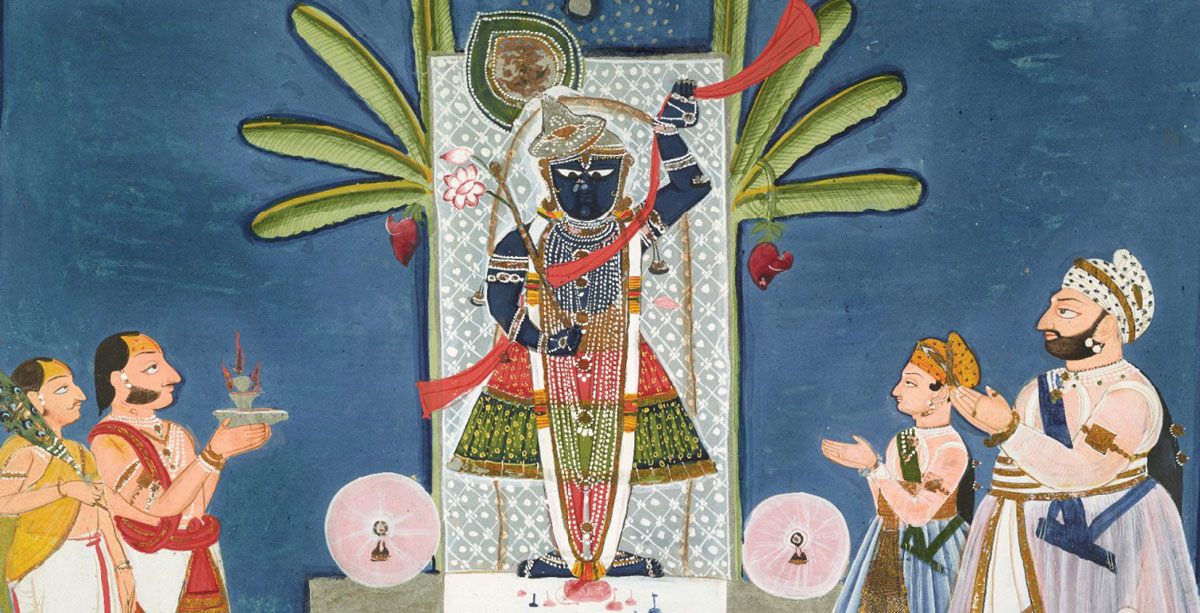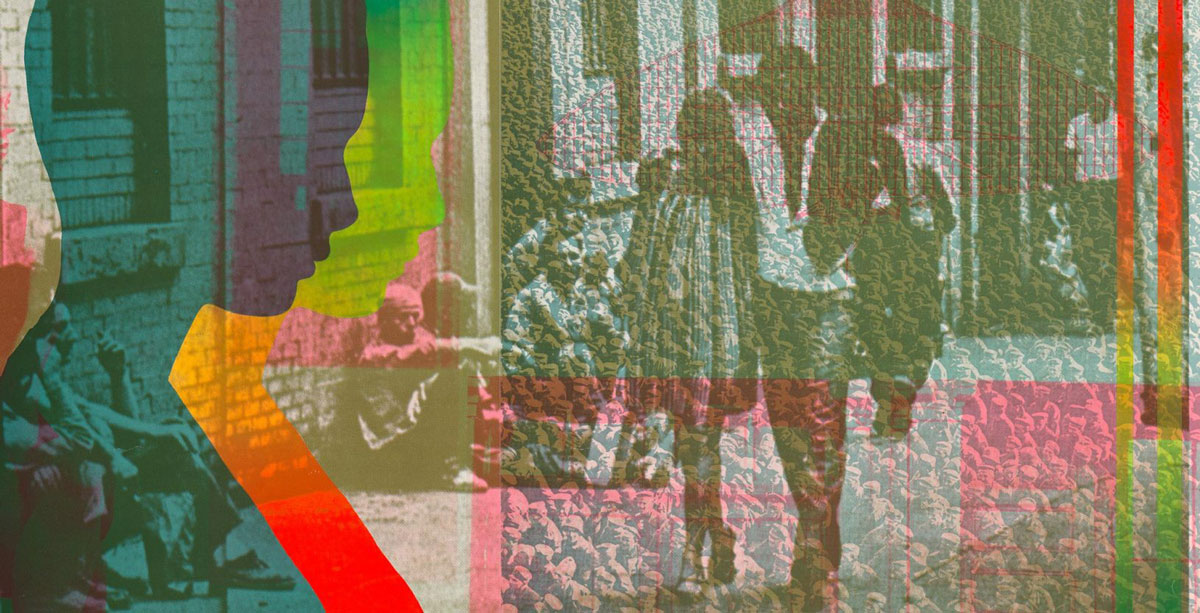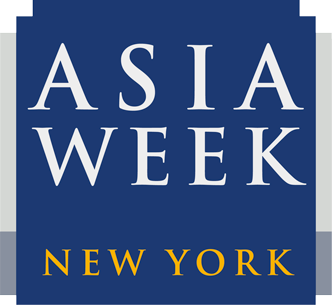EXHIBITIONS CLOSING SOON
Body Transformed: Contemporary South Asian Photographs and Prints
February 15 – August 17, 2025
Arthur M. Sackler Gallery | Gallery 28
Body Transformed: Contemporary South Asian Photographs and Prints presents a selection of works that center on the human figure. For the artists in this exhibition, the human form and the expressive power of photography and print media offer ways to examine the place of the individual in contemporary society.
Works by Pushpamala N. and Clare Arni, Vivek Vilasini, Ram Rahman, and Naveen Kishore focus on the performing body to confront notions of gender and cultural identity through photography, a medium that has played a complicated role in India since the nineteenth century. Jitish Kallat and Rashid Rana manipulate photographic images to simultaneously assert and dissolve the portrait in jarring compositions that hover between reflections on the public being and the disquiet of the inner self.
Master print artists Krishna Reddy, Chitra Ganesh, and Jyoti Bhatt experiment with provocatively carved lines and vivid colors unique to printmaking. Fragmenting, morphing, and multiplying the figure, these artists incorporate various processes to explore representations of power, place, and sexuality in today’s world.
Body Transformed draws from the generous gifts of Drs. Umesh and Sunanda Gaur.
To learn more, click here.

Rawat Gokul Das of Devgarh and Tilkayat Dauji II worship Shri Nathji (detail), Chokha (act. 1779–ca. 1826), India, Rajasthan state, Devgarh, 1823, opaque watercolor and gold on paper, National Museum of Asian Art, Smithsonian Institution, Purchase and partial gift from the Catherine and Ralph Benkaim Collection—funds provided by the Friends of the National Museum of Asian Art, S2018.1.76
Delighting Krishna: Paintings of the Child-God
March 15 – August 24, 2025
Conservation Cart Talk: Friday, August 8, 3-4pm
Curator Tour: Wednesday, August 13, 12-1pm
Arthur M. Sackler Gallery | Gallery 24
Imagine a god who appears to you as a mischievous child—you dance together in meadows, play with him, and gift him fruits and flowers. This may give you an idea of how the Hindu Pushtimarg community engages with the divine. They seek to delight and care for the child-god Krishna, and in return, they receive joy and spiritual insight. Delighting Krishna delves into the emotions and philosophy of the Pushtimarg tradition and the ingenuity of its artists. Pushtimarg religious spaces feature monumental paintings of Krishna on cotton cloth known as pichwais. For the first time since the 1970s, these fourteen pichwais from the National Museum of Asian Art’s collections are on view for the public. These paintings are literally larger than life, averaging about eight by eight feet in size. Pichwais are made to serve as backdrops for three-dimensional displays, typically paired with icons of Krishna, music, and scents. This collection of pichwais dates from the eighteenth to the twentieth century, and most were painted in Nathdwara, Rajasthan, the global epicenter of the Pushtimarg community. Encounter these intriguing paintings from multiple angles through insights from Hindu community members, curators, conservators, and a conservation scientist. Alongside the pichwais, court paintings illuminate Krishna’s playful charm, and mixed-media works show how the Pushtimarg tradition engages the senses. Awash with color and brimming with joy, these artworks themselves invite delight.
Be sure to join our related programs before the exhibition closes! Join art conservator Jenifer Bosworth to explore the conservation treatment and mounting of pichwai paintings in the exhibition on August 8. See removed patches and photos from the treatment process and explore the materials Jenifer used to protect these delicate works while on view. Then, get exclusive insights into how we displayed the monumental paintings in this exhibition on August 13. Three of our experts will lead this tour: curator Debra Diamond, exhibition specialist Patrick Burke, and lighting designer Amber Meade. Learn how their creative collaboration preserved the paintings’ integrity to evoke their original multisensory contexts. Don’t miss these insightful behind-the-scenes looks before the exhibition closes!
To learn more, click here.
ONGOING EXHIBITIONS

Kimura Kōsuke (b. 1936), Present Situation (Framing B) (detail), Japan, Shōwa era, 1971, screenprint and lithograph; ink on paper, National Museum of Asian Art, Smithsonian Institution, Purchase and partial gift of the Kenneth and Kiyo Hitch Collection from Kiyo Hitch with funds from the Mary Griggs Burke Endowment, S2019.3.982, © Kosuke Kimura
Cut + Paste: Experimental Japanese Prints and Photographs
June 21 – November 30, 2025
Arthur M. Sackler Gallery | Gallery 25
Leave your assumptions about prints and photographs behind. In this exhibition, flat surfaces expand outward. Images aren’t simply printed—they are worked, reworked, and then reworked again. Paper artworks accumulate layers of unusual materials like plastic, foam, glue, and tape. In our era of media endlessly copied, reproduced, and loaded to screens, these photographs and prints beg to be viewed in person.
Cut + Paste showcases seventeen Japanese artists who pushed the limits of printmaking and photography. By combining techniques, these artists created multilayered images that challenge distinctions between mediums, art-making traditions, and notions of fine art and commercial design.
The prints and photographs in this exhibition are drawn entirely from our permanent collection and range across the twentieth and early twenty-first centuries. These experimental works blur reality, memory, and even how we perceive space and time. Just as each artist’s approach is unique and deeply personal, so is every person’s experience of the multiple layers, angles, and textures of these artworks.
To learn more, click here.
Striking Objects: Contemporary Japanese Metalwork
March 2, 2024 – January 11, 2026
Contemporary Japanese metalworking breathes life into traditional methods that have been passed down and practiced over generations. The artists featured in Striking Objects create masterpieces that combine tradition with creativity and innovation. The exhibition highlights works from the collection of Shirley Z. Johnson (1940–2021), distinguished lawyer, philanthropist, and former board member of the National Museum of Asian Art. Her passion for contemporary Japanese metalwork and her visionary gift have made the National Museum of Asian Art home to the largest collection of such works in the United States.
Reasons to Gather: Japanese Tea Practice Unwrapped
April 12, 2025 – April 26, 2026
Tea Presentation: April 19, 2025 from 2-3pm (by registration)
Freer Gallery of Art | Gallery
Japanese tea practice, chanoyu, centers on the appreciation of tea utensils used to prepare and consume powdered green tea, called matcha. Chanoyu elevates these utensils, which include ceramic tea caddies, tea bowls, and hanging scrolls of calligraphy, into objects of aesthetic admiration. The objects in this exhibition accumulated significance over generations through their continued use and display at tea gatherings. Tea practitioners have also cherished the accompanying boxes, documents, and textiles that demonstrate an object’s accrued layers of historical and cultural meaning.
Reasons to Gather: Japanese Tea Practice Unwrapped presents eleven historic tea utensils and accessories, including ceramics, hanging scrolls, boxes, and wrapping cloths. Finding their way from China, Korea, and South Asia into Japanese tea rooms, these objects tell a story of trade and exchange across Asia. This exhibition unveils how chanoyu brought together these different cultural elements through networks of tea practitioners.
The tea utensils featured in this exhibition come from the Kinsey Chanoyu Collection. Gregory Kinsey gifted the museum nearly two hundred objects, a collection that grew from his lifelong devotion to the practice of chanoyu. In an effort to share and uplift the art of tea practice, Kinsey dedicated most of the works to the Freer Study Collection for use in public programs that demonstrate the traditional preparation of matcha. Because of their historical and artistic significance, another sixteen pieces with accompanying provenance documentation entered the Freer Gallery of Art Collection for exhibition and research.
On April 19, witness a public presentation of a traditional Japanese practice of tea preparation, featuring tea utensils from the museum’s collection. Chanoyu is an embodied practice where students learn codified ways of preparing and consuming powdered green tea, or matcha, through in-person instruction from a teacher. This event celebrates the fifteenth anniversary of the Eastern Region USA chapter of the Omotesenke Domonkai, the association of practitioners following the tradition of Omotesenke Fushin-an in Kyoto, Japan.
To learn more, click here.
Knotted Clay: Raku Ceramics and Tea
December 9, 2023 – 2026
Japan’s rich history of ceramic artistry developed in large part alongside the culture of drinking tea. Japanese tea practitioners initially used Chinese and Korean antique ceramics as tea bowls but began using newly made Japanese tea bowls, such as Raku ware, in the sixteenth century. Unlike most tea bowls, Raku ceramics are built by hand—a process described as “knotting clay”—as opposed to using a wheel. Knotted Clay: Raku Ceramics and Tea explores these distinctive, hand-molded ceramics and their close relationship to Japanese tea culture. This exhibition features tea bowls, water containers, and other vessels in the museum’s permanent collection that demonstrate the glazes and forms unique to Raku ware.
Do Ho Suh: Public Figures
April 27, 2024 – April 29, 2029
To usher in the next century of the National Museum of Asian Art, artist Do Ho Suh (b. 1962, South Korea) was commissioned to create a special edition of his work Public Figures to be installed in front of the museum and facing the National Mall in Washington, DC. Internationally recognized for his large-scale installations, Suh was among the earliest contemporary artists featured in the museum’s groundbreaking Pavilion exhibition series and his work will be the first new sculpture to be installed outside the historic Freer Gallery of Art in over three decades.
Japanese Art from the Collection
October 26, 2024 – Ongoing
This exhibition highlights both iconic and lesser-known aspects of Japanese culture through paintings and ceramics from the Freer Gallery of Art Collection. Learn about Japanese art with a focus on the environment, notions of the body, historical crises, and new research findings. Japan’s changing landscapes and local ecologies affected both imagery in paintings and how ceramics were made. Meanwhile, historic crises gave rise to art unique to Japan, such as stoneware repaired with gold (kintsugi) or visual retellings of national stories. Human bodies in art tell us about the emotions an artist wanted to express or the beauty standards of an era. Lastly, analysis of both broken and whole ceramics can give us new insights into how these works were designed, used, and valued.
The works in this exhibition come exclusively from the Freer Gallery of Art Collection, which houses Japanese paintings and ceramics from 3000 BCE to the twentieth century. Our museum’s founder, Charles Lang Freer, donated his collection to the nation in 1906 with the stipulation that the works not be loaned to other institutions or displayed among art from other collections. His gift established our museum and gave the public access to works from across Asia.
Body Image: Arts of the Indian Subcontinent
Ongoing
The human body, particularly the beautiful body, is central to artistic expression on the Indian subcontinent. Through the body, artists express fundamental beliefs about the nature of being, social ideals, gender roles, and hierarchies of power, both earthly and divine. The subcontinent, which extends from Pakistan eastward to Bangladesh and from Nepal southward to Tamil Nadu and Sri Lanka, has long been culturally and religiously diverse. By grouping and juxtaposing masterpieces from the museum’s collection, this exhibition explores concepts and aesthetics of the body.
Art and Industry: China’s Ancient Houma Foundry
Ongoing
The largest bronze foundry complex from antiquity was excavated at Houma in northern China in the mid-twentieth century. At the two-acre site, archaeologists discovered evidence of extremely sophisticated manufacturing techniques.The facility was established around 585 BCE by the rulers of the State of Jin, who remained its chief patrons for about 150 years. Houma produced ornamented objects with complex, abstract designs, inlay, and what is now considered to be the earliest pictorial narratives in China. More than half of the objects featured in this exhibition were made at Houma. Other pieces illustrate the factory’s long-lasting influence and legacy that extended into the Western Han period (206 BCE–9 CE).
Rediscovering Korea’s Past
Ongoing
Today we admire the translucent gray-green celadon glaze on Korean ceramics of the Goryeo period as one of the great achievements of world potters. In the late 19th century, long-respected tombs of royal figures and nobility from the Goryeo period (935–1392) became vulnerable to looting and were sold in the antiquities market. American doctor and diplomat Horace Newton Allen witnessed this rediscovery while he lived in Seoul from 1884 to 1905, and he formed his own sizeable collection of celadon, it seems, from objects on the open market. Charles Lang Freer purchased Allen’s collection in 1907 and sparked his
deep interest in this distinguished Korean ware. In turn, Allen, Freer, and other early collectors inspired generations of scholars to clarify the styles and dating of Goryeo celadon. Archaeologists have now identified and excavated the kiln complexes at Gangjin and Buan, which produced the finest celadon wares during the Goryeo dynasty.
Afterlife: Ancient Chinese Jades
Ongoing
A construction boom in China more than a century ago resulted in new railways and factories—and the accidental discovery of scores of rich ancient cemeteries. Buried in these tombs for thousands of years were jewelry and ritual objects, all laboriously crafted from jade. When Charles Lang Freer acquired many of them, their precise age was unknown. The modern science of archaeology was not practiced in China until 1928, when the Smithsonian sponsored its introduction. With the advent of archaeology came a better appreciation of the evolution of ancient Chinese mortuary culture and China’s art history.
Today we know these jades represent the earliest epochs of Chinese civilization, the late Neolithic and early Bronze Age. Many came from the prehistoric burials of the Liangzhu culture (circa 3300–2250 BCE). These Stone Age people flourished in a large, fertile region between the modern cities of Shanghai, Hangzhou, and Nanjing. The graves they left behind now function like time capsules, providing insight into the dynamic character of ancient Chinese civilization during life and after death.
Setting the Bar: Arts of the Song Dynasty
Ongoing
China’s Song dynasty established many prototypes in government, society, and the arts. A system of schools and examinations for entering public office led to an efficient, centralized government headed by the emperor but staffed by well-educated commoners. Emerging as a class of scholar-officials, who were both artists themselves and consumers of art, these men looked to ancient tradition as a source for moral principle and creative inspiration. At the same time, a spirit of inquiry and close examination of nature led to advances in art and science. Widespread gains in literacy and disposable income also stimulated growth in the arts. Elegance and refinement in form, line, and color characterize the visual arts of China during the Song dynasty. As new technology enhanced ceramic production and the number of kilns rose, fresh approaches to decoration developed. The rise of ink painting paralleled a taste for monochrome ceramic glazes. A multitude of other painting styles and techniques emerged as well, with a strong preference for realistic detail, modulated colors, and individualized faces and postures.
Wisdom of the Goddess: The Divine Feminine in South Asian, Southeast Asian, and Himalayan Art
Ongoing Online Exhibition
It is often said that knowledge is power. For the goddesses of South Asia, Southeast Asia, and the Himalayas, power is closely connected to a particular type of divine wisdom or a state of omniscience, of knowing all things. The wisdom of the divine feminine takes myriad forms in these regions, ranging from healing to artistic skill, and from prosperity to enlightenment. Wisdom of the Goddess highlights nine well-known goddesses of Hindu and Buddhist traditions through twenty-five artworks dating from the ninth through the nineteenth centuries, all drawn from the National Museum of Asian Art’s permanent collections. Many of these representations of goddesses were used by individuals or in temple settings as aids for worship. Some were encountered in manuscripts or worn as necklaces. For devotees past and present, a goddess’s image facilitates a sense of intimate devotion and closeness to the deity.
Prehistoric Spirals: Earthenware from Thailand
Ongoing
Red painted spirals swirl across the surfaces of these vessels, testifying to the sophisticated material and aesthetic cultures of northeastern Thailand more than two thousand years ago. Their makers belonged to a loose network of settlements specializing in bronze and ceramic production. Recent research into their materials, techniques, and designs opens new lines of inquiry into the region’s heritage and its profound cultural and material legacy.
Peacock Room Shutters Open Every Third Thursday of the Month
Ongoing
See the Peacock Room in a whole new light! Please join us for a beloved NMAA tradition: our third Thursday opening of the Peacock Room shutters. Experience this unique masterwork of art and design in a whole new way as natural light reveals details of James McNeill Whistler’s painted interior and accents the gleaming surfaces of Charles Lang Freer’s collection of Asian ceramics.
The shutters are open from noon to 5:30 p.m. every third Thursday of each month.
Free, no registration required.
The Tibetan Buddhist Shrine Room
Ongoing
The Tibetan Buddhist Shrine Room includes more than two hundred bronzes, paintings, silk hangings, and carpets that were created in Tibet, China, and Mongolia between the thirteenth and early twentieth centuries. Arranged to reflect Tibetan Buddhist concepts and customs rather than museum conventions, the glittering room evokes the Himalayan portals that bridge the mundane and the sacred worlds.
The objects, assembled by collector Alice S. Kandell over many years, are placed on painted furniture, arranged among paintings and textiles, and presented without labels. With an aural dimension of chanting monks, this dynamic and densely layered display restores the relationships between Buddhist figures and viewers that are typically dissolved within museums.
To view all exhibitions, click here.
ONGOING EVENTS
Tours | Arts Across Asia
Every Thursday through Sunday, and Friday from 2-3pm
Arthur M. Sackler Gallery, Information Desk
Join a free, hour-long guided tour of the East Building. The tour can feature art from any of the exhibitions currently on view, with works from cultures as diverse as ancient Iran to contemporary Japan.
To learn more and sign up, click here.
Meditation and Mindfulness
Every Tuesday and Friday from 12-12:45pm
Online
Meditation helps us build a relationship to a place of inner quietude. Whether you’re a beginner or a skilled practitioner, join us for free online meditation sessions led by DC-based meditation teachers every Tuesday and Friday. Friday sessions include inspiration from art in the museum collections as well as appearances by special guests, including teachers, curators, and artists. All are welcome! No previous experience is required.
To learn more and sign up, click here.

